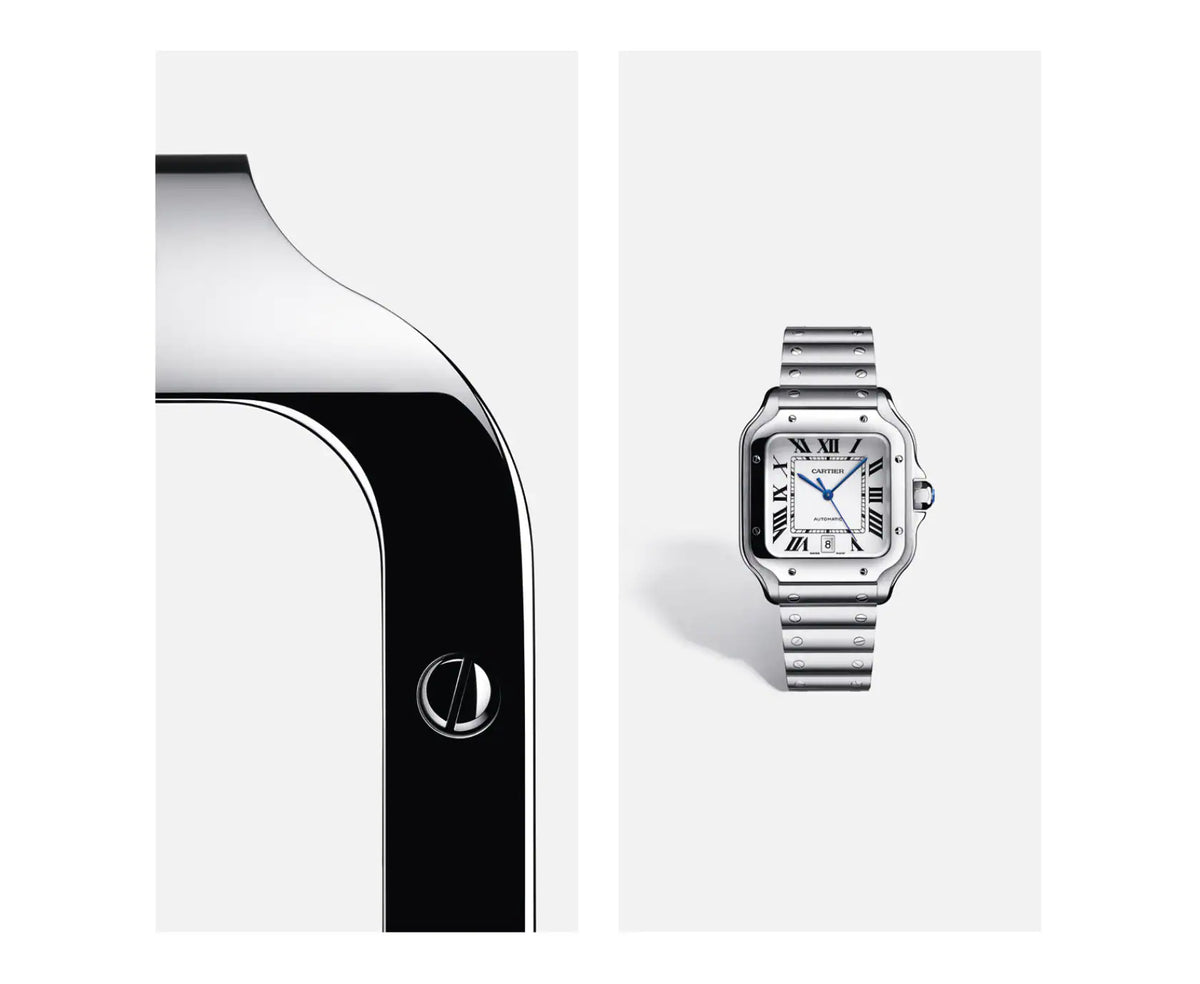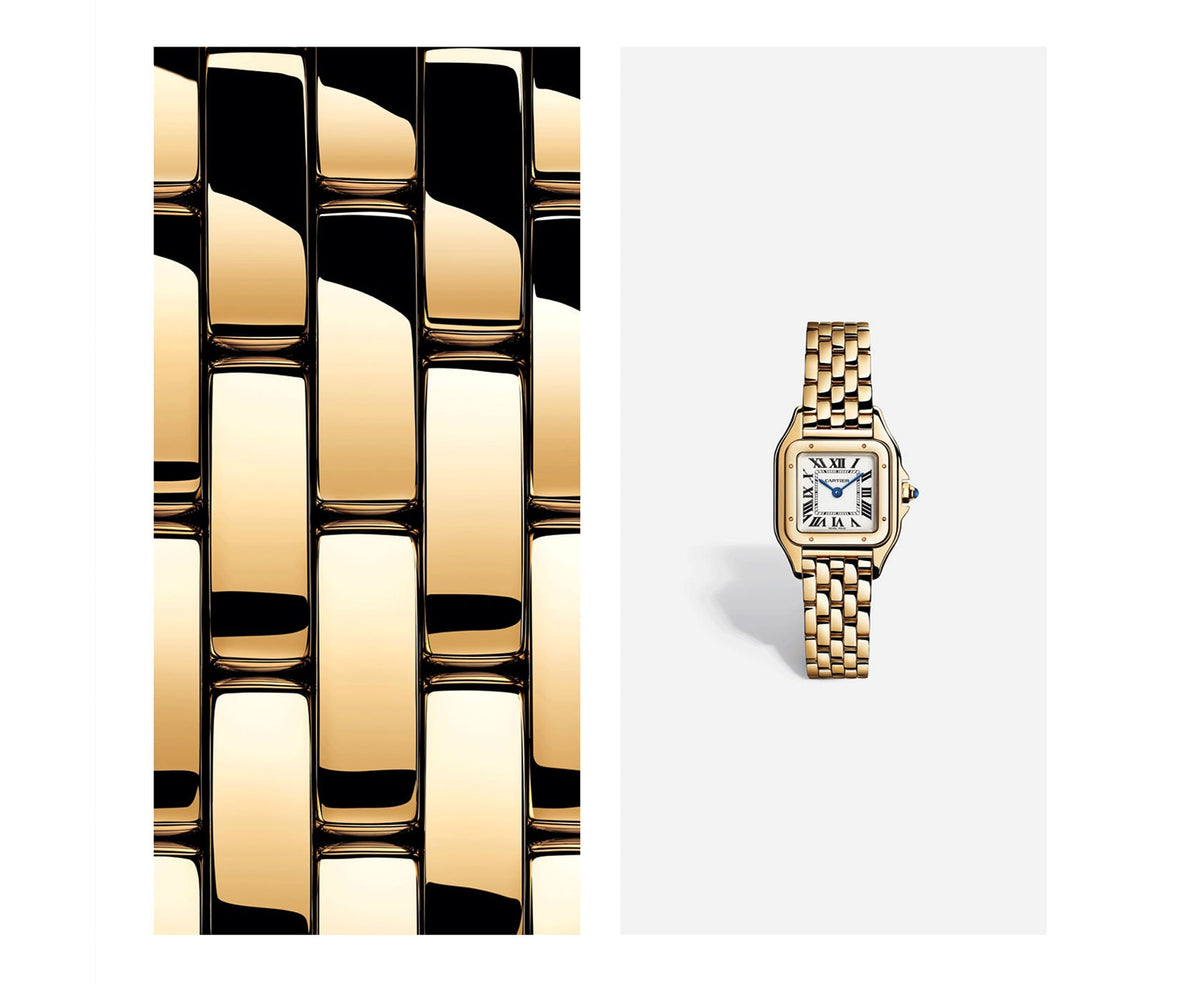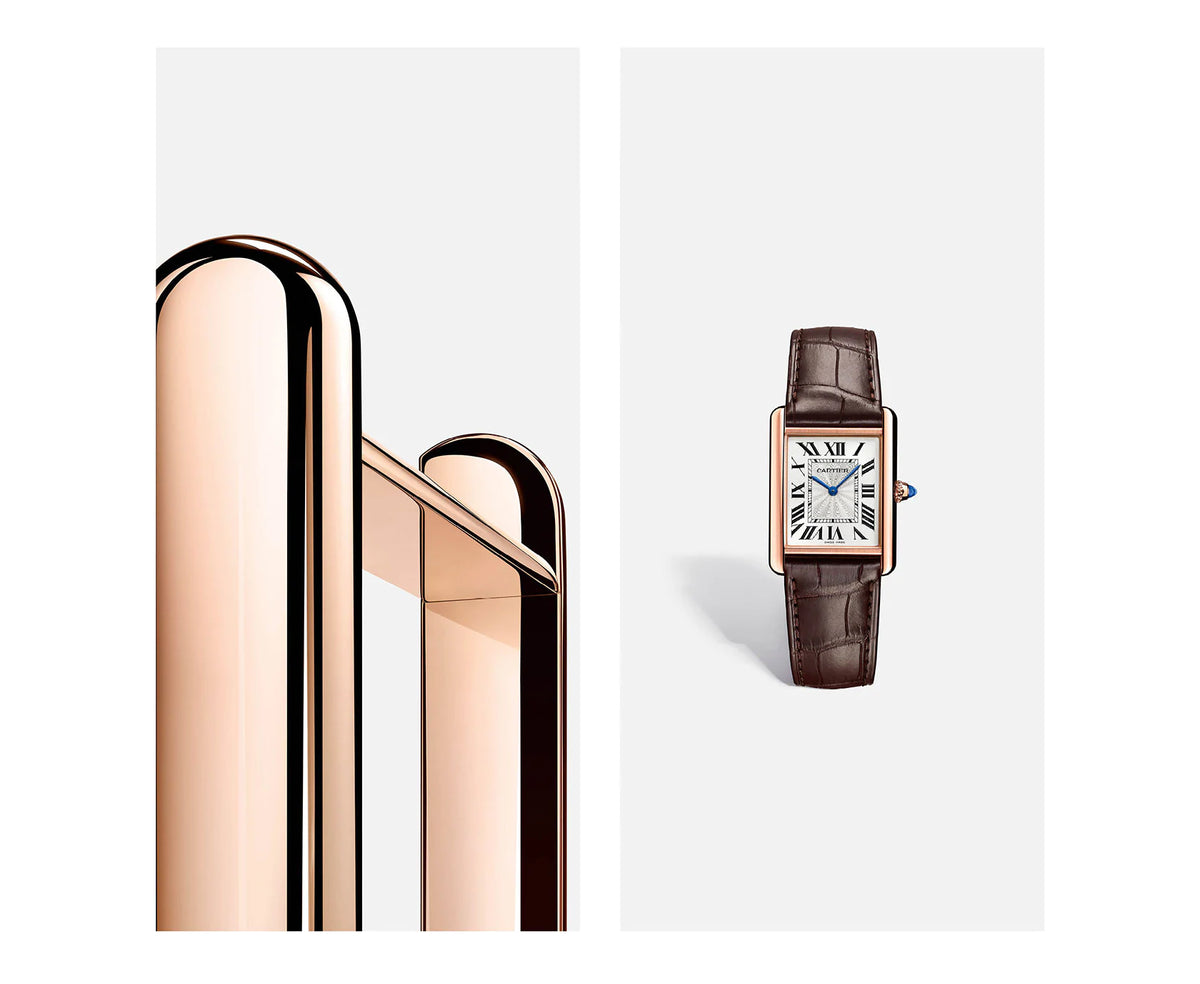
Style
The first timepieces started to appear in the Maison’s registers from 1853: men’s pocket watches as well as watches in the form of pendants, brooches and châtelaines for women.
Over the years, Cartier watchmaking has distinguished itself by focusing on the notion of design, symbolised in 1904 by the creation of the Santos de Cartier watch: the first modern watch designed to be worn on the wrist.
The Cartier watchmaking heritage is ever-evolving, allowing the Maison to revisit the shapes of timeless classics through new versions, all while remaining as faithful as possible to the historic model yet with modernised ergonomics
that meet today's requirements.
The Culture Of Design

Santos De Cartier Watch
In 1904, Louis Cartier granted the aviator Alberto Santos-Dumont's wish: to be able to tell the time while flying, without having to let go of the controls to check his pocket watch. Cartier broke ground by imagining a square watch in a world dominated by round ones, whose screws, traditionally hidden in watchmaking, are made visible on the bezel. Rounded edges, symmetrical bevels and curving horns that converge towards the bracelet. Original precision allows Cartier to rework the proportions of the Santos watch according to the times
Panthere Watch
First created in the 1980s, the Panthère watch is the ultimate jewelry watch. Instantly recognisable, the Panthère watch takes its name from the bracelet which exudes lusty sensuality and the fluidity of its links which coil seductively around the wrist. An iconic style that layers elegance upon elegance: the dainty square case with rounded corners, the refined visible rivets and the dial displaying all of Cartier's watchmaking codes


Tank Watch
In 1917, Louis Cartier took inspiration from the purity of the lines of the Tank watch to create a new watch shape. The two parallel brancards are an established signature of the Tank watch. Formal research made it possible to move from a square (the dial) to a rectangle (the bracelet). The secret lies in the balance between the lines and shapes, the volume and harmony that emanate from the design and lend the Tank its remarkable elegance.


